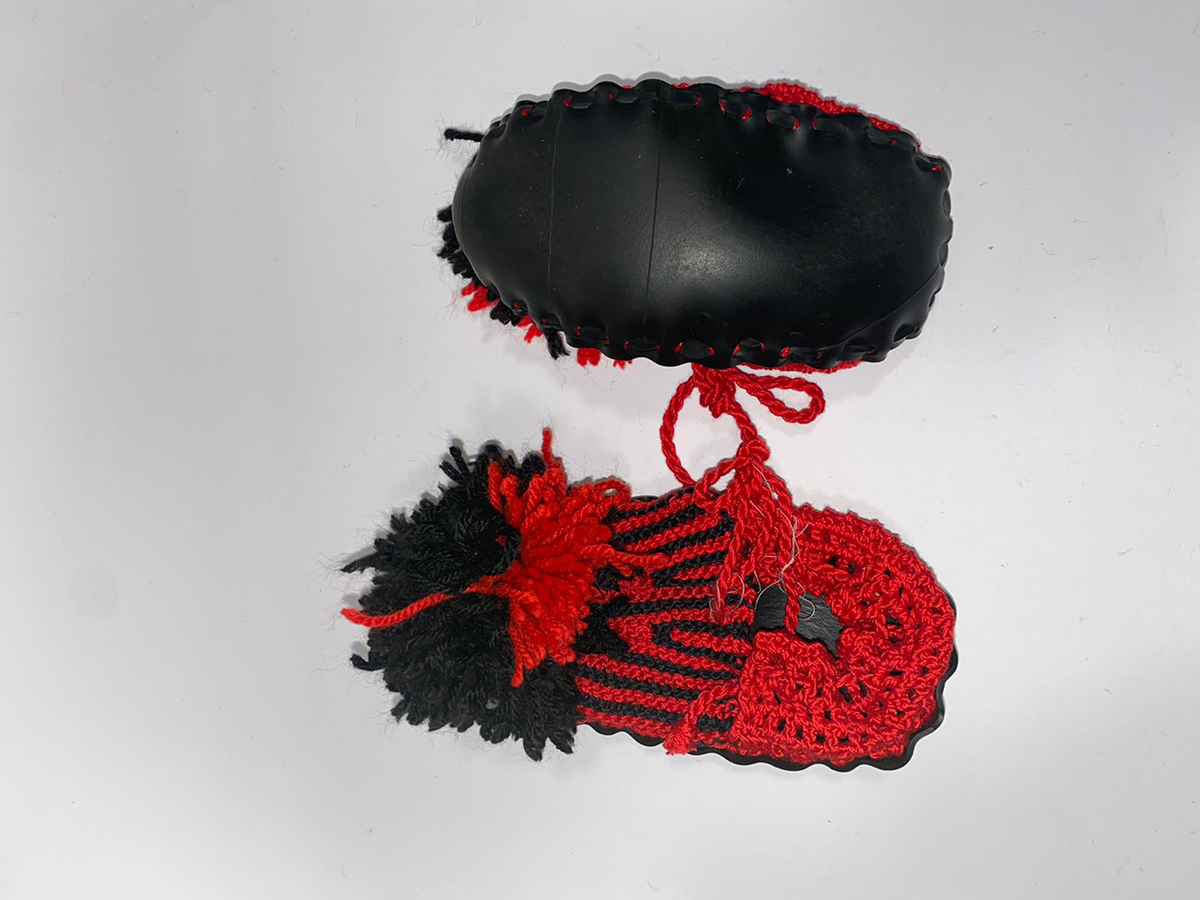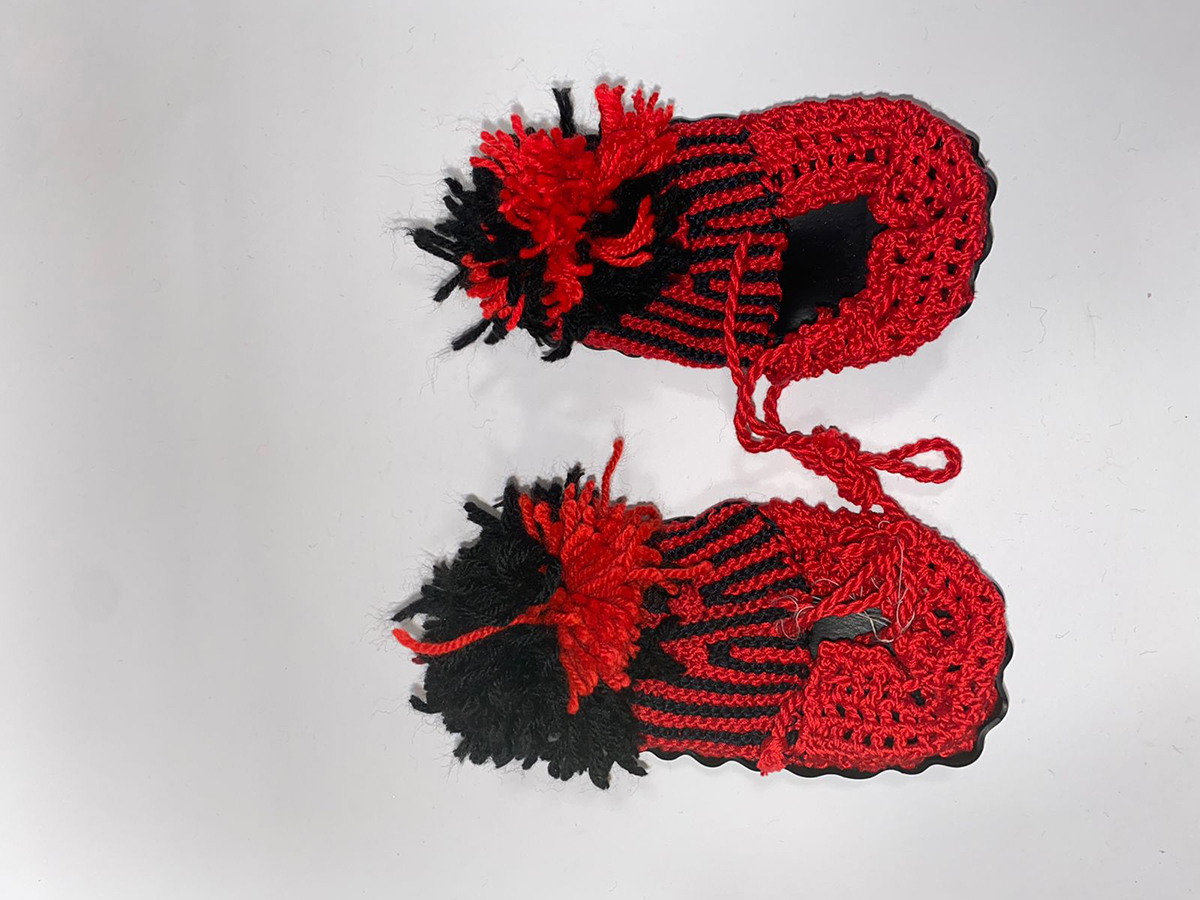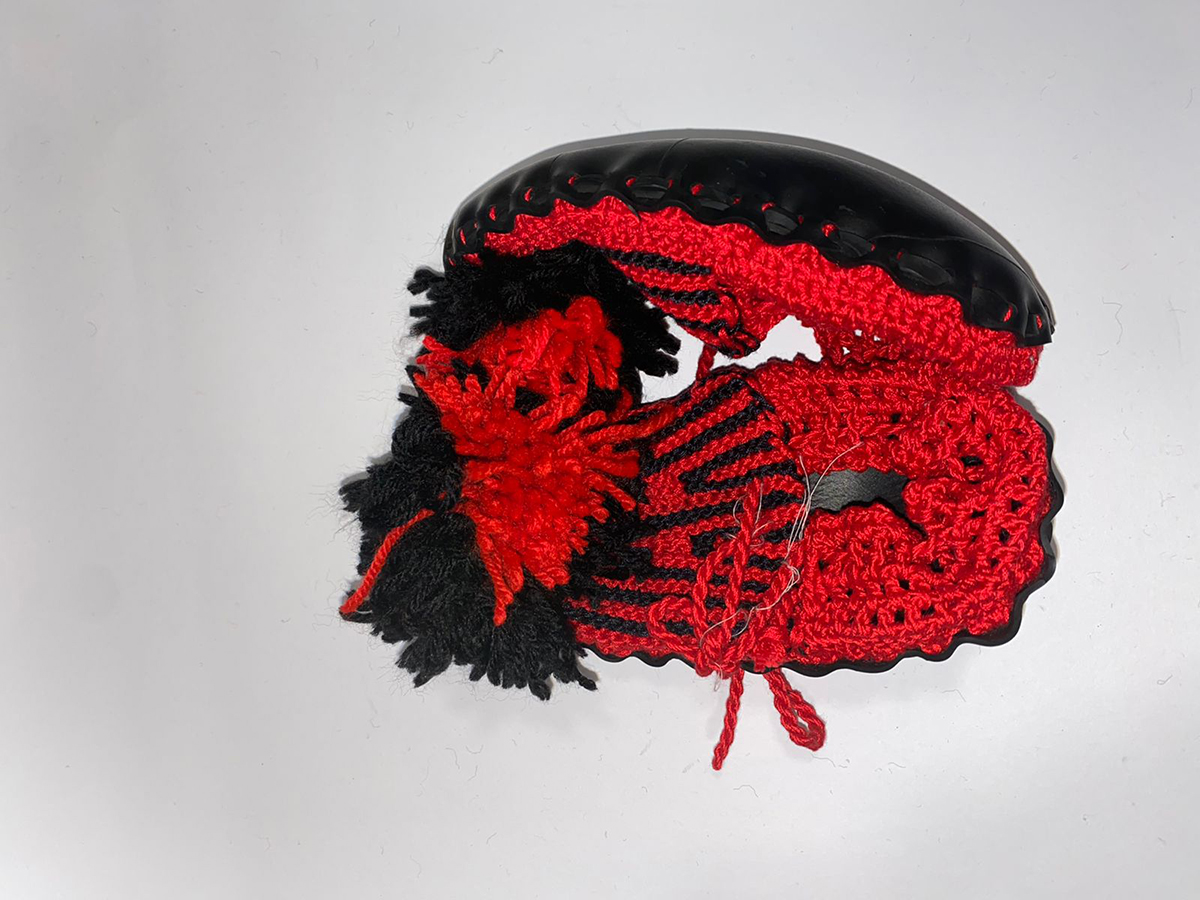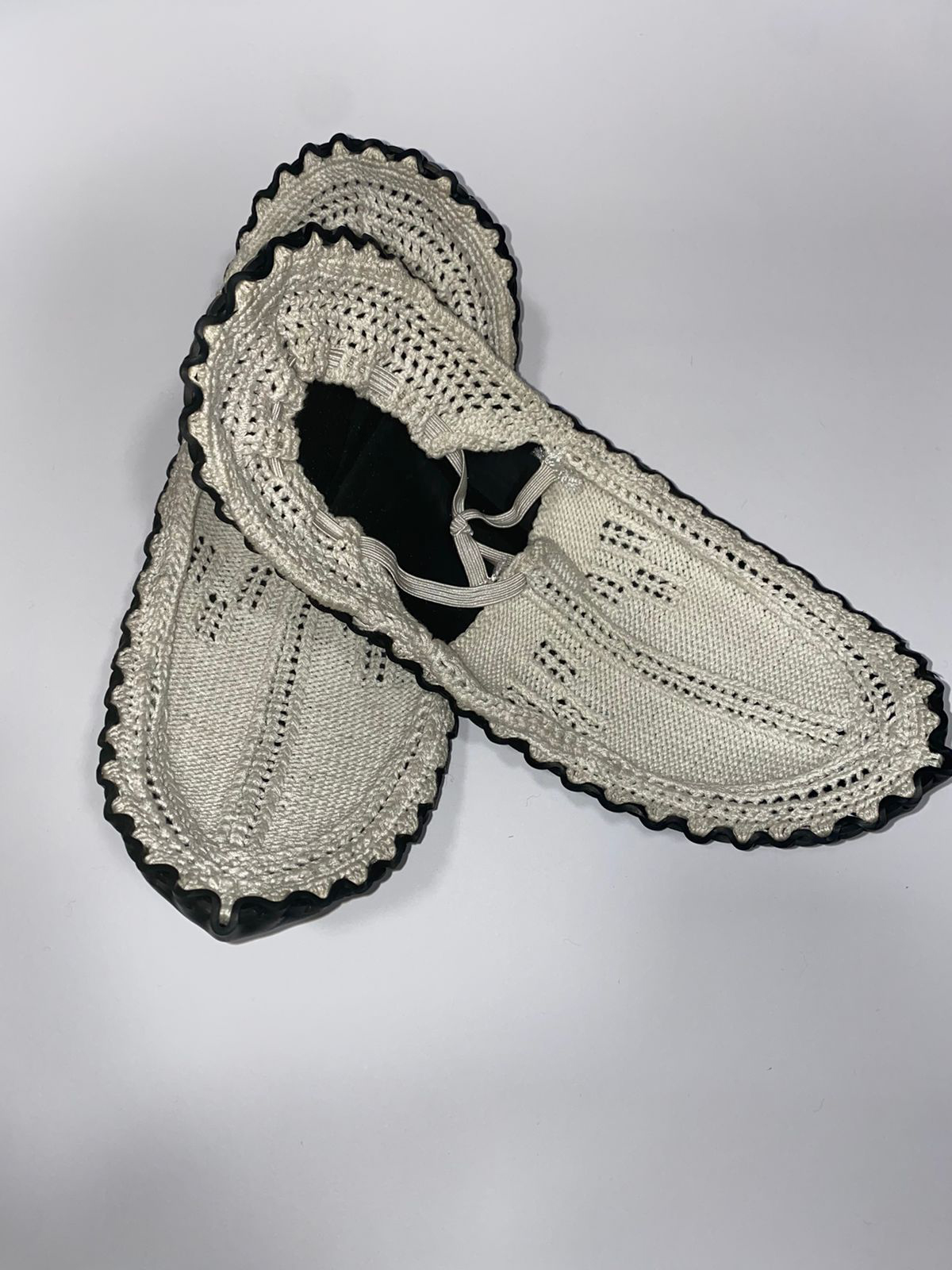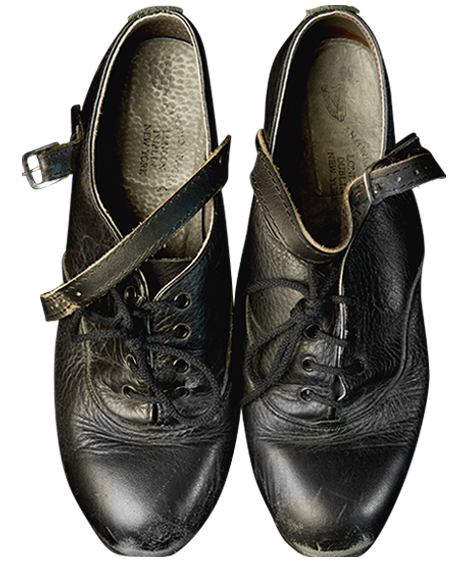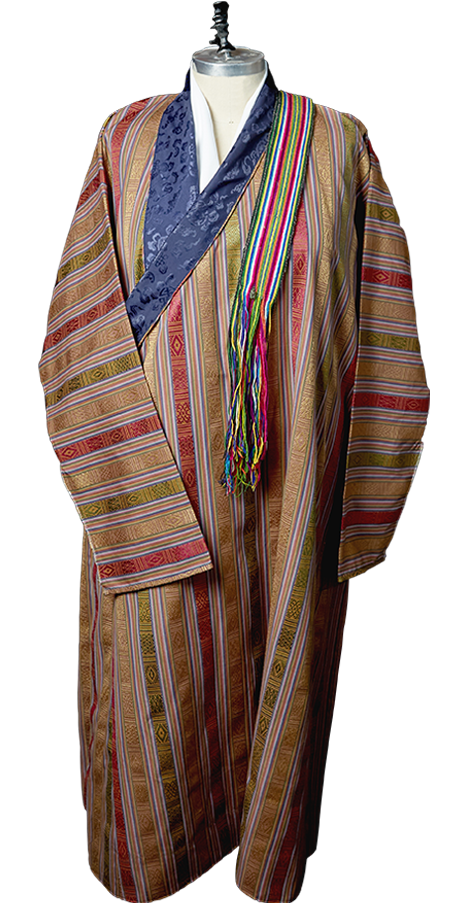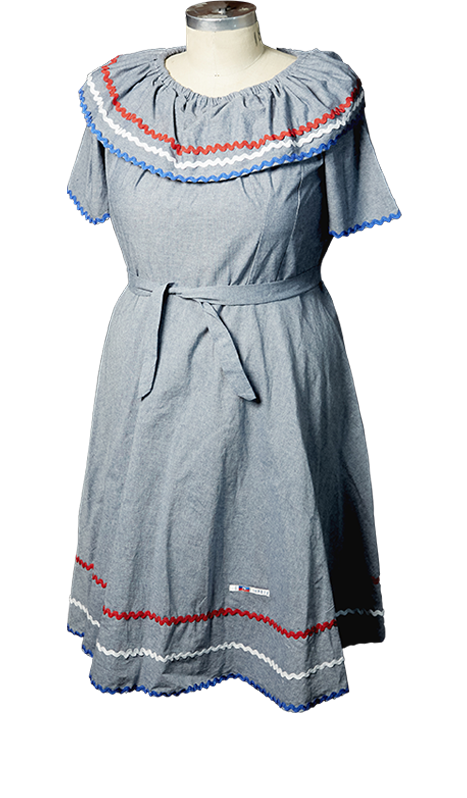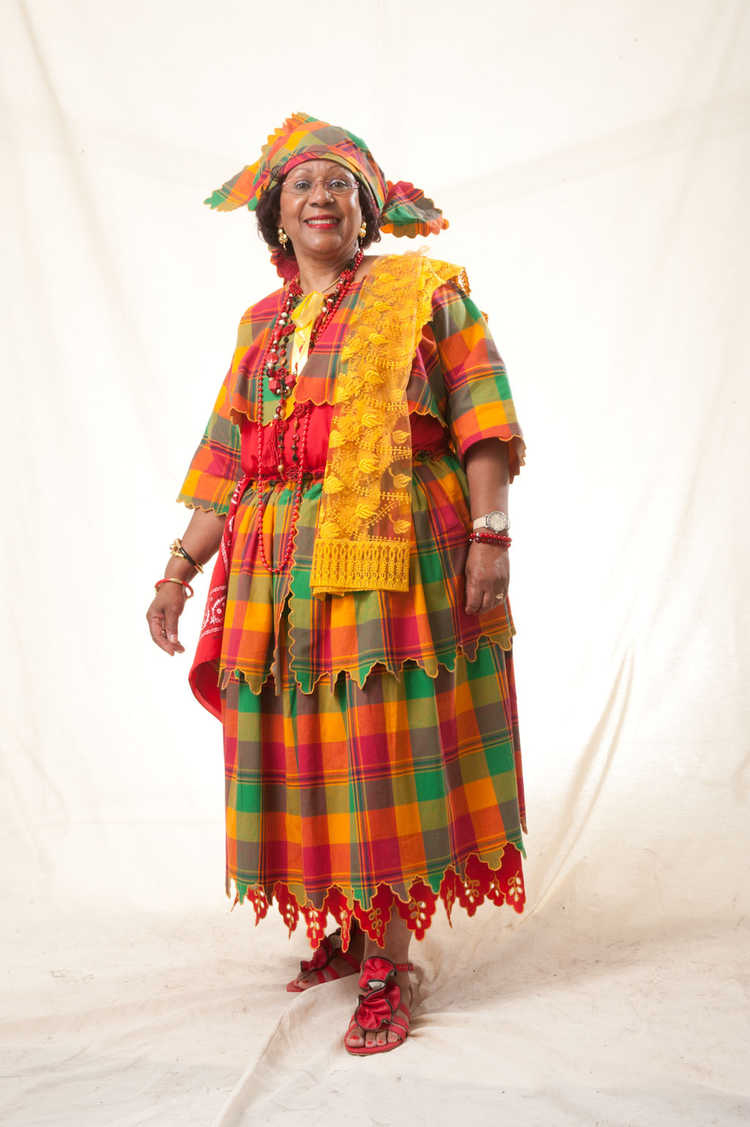Opinga Shoes
ABOUT
Our feet are one of the most vital parts of our body because they take us to destinations and keep us grounded. We cover our feet with a variety of textiles and other materials not only to keep them comfortable, warm, and protected but also to symbolize our culture and show our personal style. In Northern Albania, people traditionally wore opinga shoes, which are made from cow’s leather soles and wool uppers. They were also known as “peasant shoes.” The earliest archaeological evidence of opinga comes from the 5th to 4th centuries BC, showing that they were an important part of Illyrian society. Later proof of their use in Albania may be seen in the works of iconographic painter Onufri, who lived in the 16th century. Traditional peasant shoes used in Southeastern Europe include the opanak (in Serbian), opinci (in Romanian), and opinga (in Albanian). Two images of opinga shoes were provided by the author; both shoes are made of yarn. One is black and red in color, with pompoms on the front and strings attached on the back, which are made for tying it around the ankle and calf. The other is a white pair of slip-ons. According to Elvis Bardoshi’s study paper on the subject, opinga were once worn all the time. Elvis Bardoshi’s Albanian mother stated that the opinga shoes were worn by women of all ages at the time since everyone was considered equal. Whether you lived in the village or the city, no one lives better than another. She also mentioned that men wore white wool threaded opingas while ladies wore the colorful ones. Elvis Bardhoshi has worn opinga shoes himself and mentioned in his paper that he finds them uncomfortable to wear. Traditionally, people would also add pompom balls to the upper area of the shoes for extra flair and a bouncing look when dancing. After further research on opinga and their relationship to Albanian Dancing, I’ve found this video from 1993 of an Albanian Folk Dance called shota, where the men wore white opinga shoes, the ladies wore the comparable opinci Romanian shoes, which were made from the same cow’s leather and wool uppers but did not have laces. I also found a photograph named “The Opinga Boy” in the LAGCC Library, which depicts a man and two boys selling opinga on the streets of Albania in 1923. Traditional opinga are seldom used nowadays, unless on special occasions or when dancing the shota. Opinga’s structure and materials have altered as well. Because rubber is more durable than leather, the soles have been changed.
On reflection, as we continually evolve, so do our clothing choices, and while traditional clothing isn’t worn as much as it once was, I believe it is more important than ever to reconnect with one’s roots and rediscover one’s culture.
—Label written by Darla Gamboa
Listen to Audio
Click on Image to View Gallery
ORIGIN
Albania
APPROXIMATE DATE
from 5th Century BC to the Present
MATERIALS
Leather, wool
COLLECTION OF
Elvis Bardhoshi
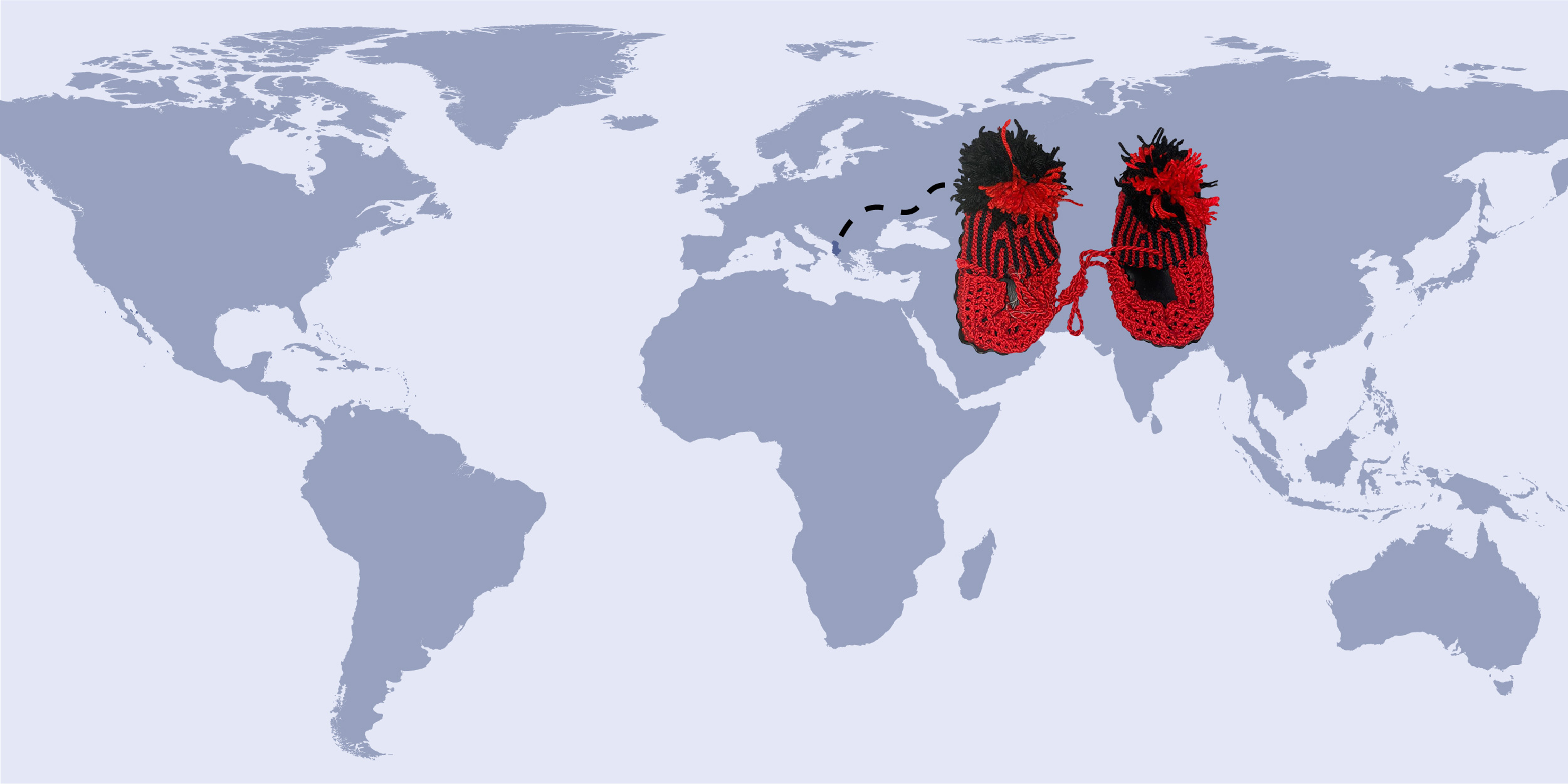
Opinga Shoes
Click on Image to View Gallery
ABOUT
Our feet are one of the most vital parts of our body because they take us to destinations and keep us grounded. We cover our feet with a variety of textiles and other materials not only to keep them comfortable, warm, and protected but also to symbolize our culture and show our personal style. In Northern Albania, people traditionally wore opinga shoes, which are made from cow’s leather soles and wool uppers. They were also known as “peasant shoes.” The earliest archaeological evidence of opinga comes from the 5th to 4th centuries BC, showing that they were an important part of Illyrian society. Later proof of their use in Albania may be seen in the works of iconographic painter Onufri, who lived in the 16th century. Traditional peasant shoes used in Southeastern Europe include the opanak (in Serbian), opinci (in Romanian), and opinga (in Albanian). Two images of opinga shoes were provided by the author; both shoes are made of yarn. One is black and red in color, with pompoms on the front and strings attached on the back, which are made for tying it around the ankle and calf. The other is a white pair of slip-ons. According to Elvis Bardoshi’s study paper on the subject, opinga were once worn all the time. Elvis Bardoshi’s Albanian mother stated that the opinga shoes were worn by women of all ages at the time since everyone was considered equal. Whether you lived in the village or the city, no one lives better than another. She also mentioned that men wore white wool threaded opingas while ladies wore the colorful ones. Elvis Bardhoshi has worn opinga shoes himself and mentioned in his paper that he finds them uncomfortable to wear. Traditionally, people would also add pompom balls to the upper area of the shoes for extra flair and a bouncing look when dancing. After further research on opinga and their relationship to Albanian Dancing, I’ve found this video from 1993 of an Albanian Folk Dance called shota, where the men wore white opinga shoes, the ladies wore the comparable opinci Romanian shoes, which were made from the same cow’s leather and wool uppers but did not have laces. I also found a photograph named “The Opinga Boy” in the LAGCC Library, which depicts a man and two boys selling opinga on the streets of Albania in 1923. Traditional opinga are seldom used nowadays, unless on special occasions or when dancing the shota. Opinga’s structure and materials have altered as well. Because rubber is more durable than leather, the soles have been changed.
On reflection, as we continually evolve, so do our clothing choices, and while traditional clothing isn’t worn as much as it once was, I believe it is more important than ever to reconnect with one’s roots and rediscover one’s culture.
—Label written by Darla Gamboa
ORIGIN
Albania
APPROXIMATE DATE
from 5th Century BC to the Present
MATERIALS
Leather, wool
COLLECTION OF
Elvis Bardhoshi

Listen to Audio
OTHER OBJECTS FROM THE EXHIBITION

